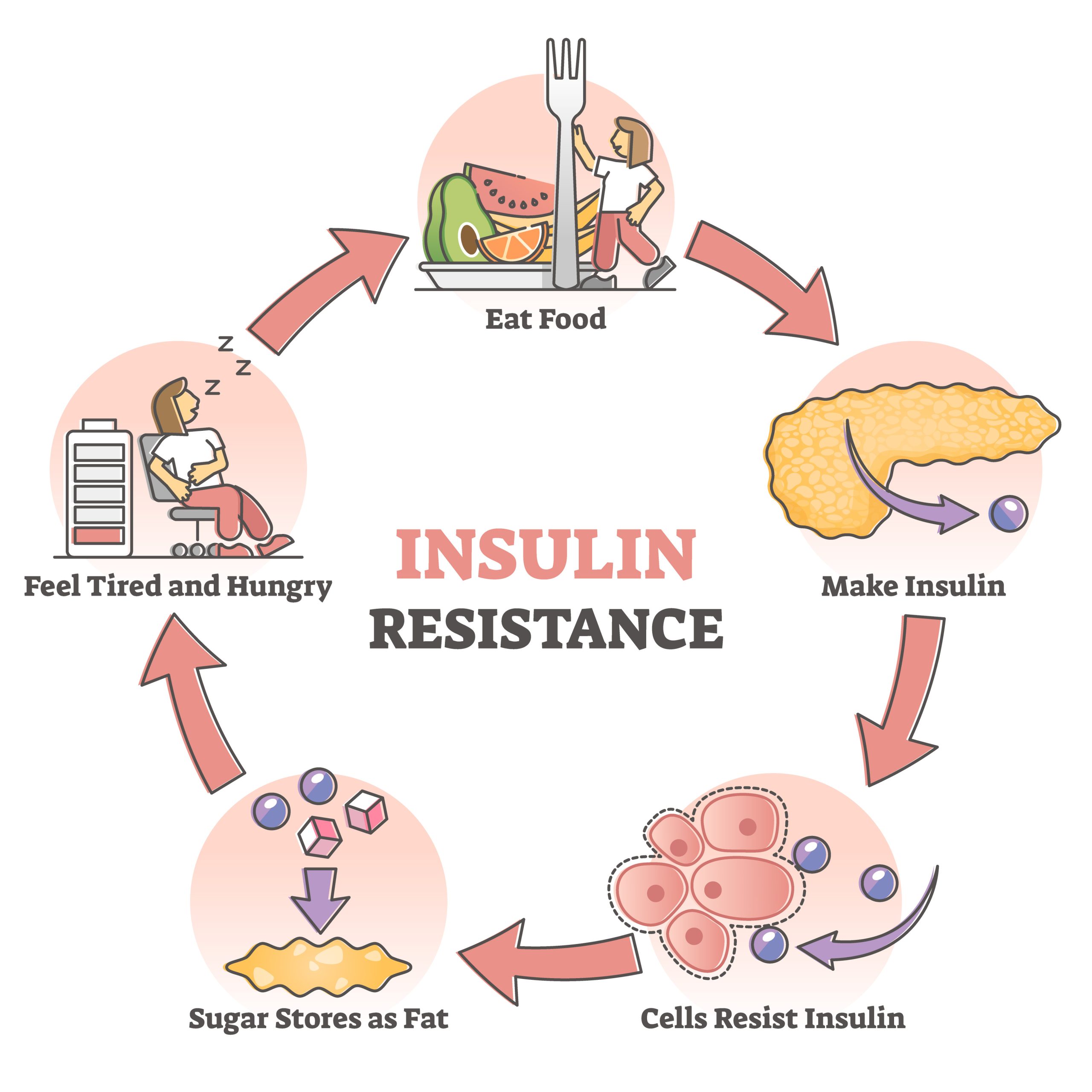What Is Insulin Resistance and Why It Matters for Women’s Health

If you have ever heard the term insulin resistance and felt a little confused or even worried, you are not alone. Many women I talk to in my practice as a Physician Assistant and Certified Diabetes Care and Education Specialist (CDCES) tell me they feel overwhelmed when they hear it. The good news is that understanding insulin resistance is the first step to taking back your health and energy. Let’s break it down in a simple, supportive way.
What Is Insulin Resistance?
Insulin is a hormone made by your pancreas. Its main job is to help glucose, or sugar from the food you eat, move from your bloodstream into your cells. Your cells then use that glucose for energy. Think of insulin as a key that opens the door so your cells can get the fuel they need.
Insulin resistance happens when your cells stop responding as well to insulin. It is like the key is knocking on the door but the door will not open easily. Your pancreas works harder and harder, making extra insulin to try to keep your blood sugar levels in a healthy range. Over time, this can lead to higher insulin levels, higher blood sugars, and eventually type 2 diabetes if no changes are made.
Why Insulin Resistance Matters
Insulin resistance matters because it affects so much more than just blood sugar. When your body has to produce more insulin than it should, it can lead to:
- Weight gain, especially around the belly
- Energy crashes after meals
- Increased risk for type 2 diabetes
- Higher risk of heart disease
- Hormonal imbalances like PCOS, which can affect fertility and overall wellbeing
Because insulin resistance often develops quietly, many women live with it for years before being diagnosed. By that time, their blood sugars may already be in the prediabetes or diabetes range. Catching it early and making small lifestyle changes can protect your health and even reverse insulin resistance in some cases.
Signs of Insulin Resistance
While not everyone will have noticeable symptoms, here are a few common signs that may point to insulin resistance:
- Strong cravings for sweets or carbs
- Feeling tired or sluggish after eating
- Difficulty losing weight despite your best efforts
- Increased waistline or belly fat
- Dark, velvety patches of skin around the neck, armpits, or other areas
If you are noticing these patterns, it is worth talking with your healthcare provider about checking your blood sugar and insulin levels. Knowledge is power, and having the right information can guide you toward the right next step.
What You Can Do to Improve Insulin Resistance
The encouraging part is that insulin resistance is not set in stone. Your daily habits can make a big difference in how your body responds to insulin. Here are a few proven strategies that support better blood sugar balance:
- Prioritize protein at meals to help you feel satisfied and keep blood sugar stable.
- Move your body after eating with a short walk or light activity to help your muscles use glucose.
- Pair carbs with protein or healthy fats to slow down blood sugar spikes.
- Avoid skipping meals so your blood sugar stays steady throughout the day.
- Stay hydrated since even mild dehydration can make blood sugar harder to manage.
Small, consistent actions add up. Over time, these habits can improve your energy, support your metabolism, and help you feel more confident in managing your health.
Take the First Step Today
If you want a simple way to get started, I created a free guide called The Blood Sugar Breakthrough: 5 Habits That Actually Work. Inside you will find practical habits to guide you as you begin your journey toward better blood sugar balance.
💙 Download your free guide here and start learning what insulin resistance is and why it matters for your health and confidence. You do not have to figure this out alone.
✨ Disclaimer: This blog is for educational purposes only and is not a substitute for professional medical advice. Please consult your healthcare provider for personalized care.

